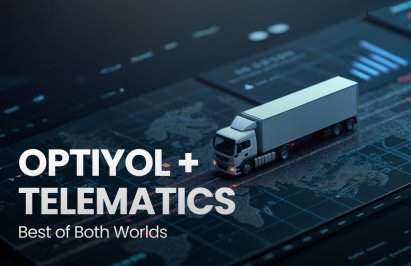
February 11, 2022


Spiking demand brings great challenges to retailers. We witnessed examples of issues in last mile deliveries and courier services during the pandemic, for example. This is why logistics and retail experts, foreseeing upcoming trends of the holiday shopping season, urge holiday shoppers to act early this year to avoid supply chain issues as much as possible.

Before preparing for the peak season, businesses should consider changing customer expectations and recognize upcoming trends in order to stand out from their competition. Only in this way can they proceed with the appropriate strategies and user experience design for the holiday season.
Now let’s first shape a deeper understanding of the ever changing behaviours and expectations of holiday shoppers and the holiday season supply chain trends for 2021.
According to Deloitte, three out of four customers have concerns about inventory stockouts. So, one of the most prominent pain points for customers this year remains the same: stock availability. They are also attuned to the possibility of price increases due to supply chain issues.
Due to the increased excitement for shopping, stock concerns and possible holiday season supply chain issues, this year holiday shoppers are opting for opportunities to buy early instead of leaving holiday shopping to the last minute. Black Friday and Cyber Monday seem to come to the rescue of early buyers at this point.
This holiday season, customers are also more inclined to switch brands or suppliers to attain the products they desire. Thus, the competition is fiercer, and maintaining customer loyalty is becoming a priority once again.

With these customer tendencies in mind, it’s vital for retailers to understand the top global supply chain trends to ensure they stay competitive and capitalize on holiday sales. Let’s have a look!
Forward-thinking retailers are determined to thrive this holiday shopping season by maintaining customer loyalty through enhanced user experience and upgraded delivery services.
Here are the most striking holiday season supply chain trends from 2021:
There has been a dramatic surge in online shopping this year. Total global e-commerce sales in the first quarter of 2021 reached $876 billion, according to the Adobe Digital Economy Index (ADEI). These figures are expected to reach $4.2 trillion annually by the end of the year. Considering that global online sales have grown to be larger than Germany's 3.86 trillion GDP in 2019, that's massive!
One of the critical driving forces of this growth is obviously the holiday shopping season. Customers are now highly adapted to online shopping and having the product they desire arrive at their doorstep without any effort. Thus, they will surely choose to buy from online channels for holiday shopping. This shows that eCommerce revenues will continue to expand this year, as will the need for seamless last mile deliveries.
Social distancing and zero-contact delivery services have become commonplace, especially during the pandemic. This has led to the upswing of omnichannel self-service models, where customers select and purchase products online, visiting the store only for delivery pick up.
Therefore, the demand for delivery processes such as Buy Online Ship to Store (BOSS) or Buy Online Pick Up in Store (BOPIS) is growing. This creates a situation that benefits everyone. Because in this way, physical stores find a way to regain the value they lost during the pandemic, retailers narrow the delivery network down to decrease delivery fees and customers are satisfied with the fast and smooth replacement and return processes.
The surge of demand can be overwhelming. Many eCommerce companies are looking for ways to resolve peak season delivery issues and avoid customer dissatisfaction. Expanding logistics services can be risky, especially to meet such demand spikes.
For this reason, companies now prefer to work with third-party logistics companies that can provide transparent and controllable delivery processes.
Another standout solution is to partner with neighbourhood stores and local shops to provide faster deliveries for a wide delivery network.

According to the CDP Global Supply Chain Report, in retail, supply chain emissions are 28.3 times higher than operational emissions. Many companies are now cognizant of this situation and are working to make their logistics activities more eco-friendly, which is especially appealing to environmentally conscious consumers.
Companies are using last mile delivery software as the most effective way to reduce their carbon footprint and to lower delivery fees. In addition, these route management softwares offer varying benefits during such peak seasons.
Increasing demand and delivery networks make it challenging to protect the load balance in last mile deliveries. Significant customer dissatisfaction also stems from complex, non-transparent and difficult-to-manage workflows in delivery services.
Route optimization software removes all obstacles for companies so they can transform these challenges into opportunities, as well as provides full control with full transparency. At the same time, the route optimization app can be used to save fuel emissions.
Optiyol cloud-based route planning software enables seamless optimization of delivery management processes with a comprehensive data model that feeds flexible and adjustable algorithms for each operation. Thus, the holiday season becomes much more enjoyable with increased revenue.